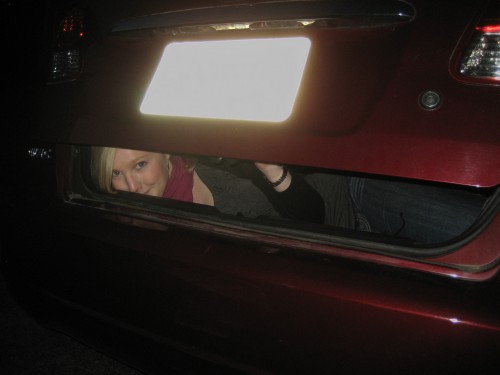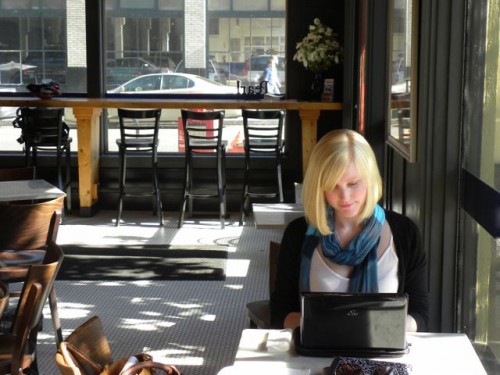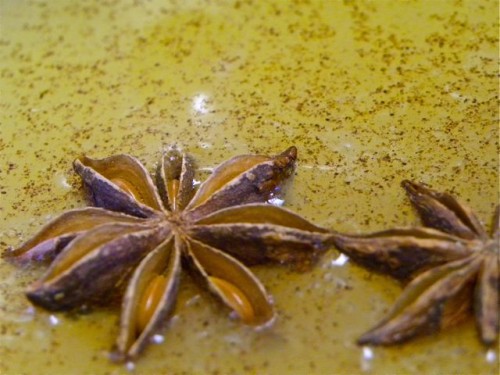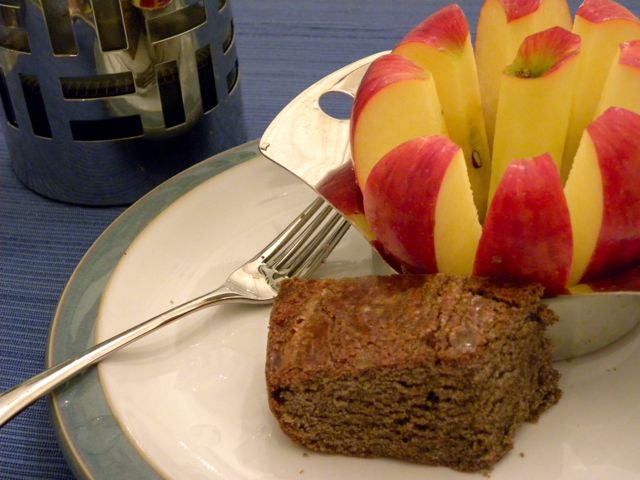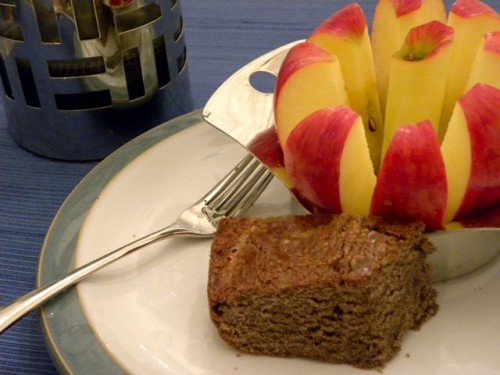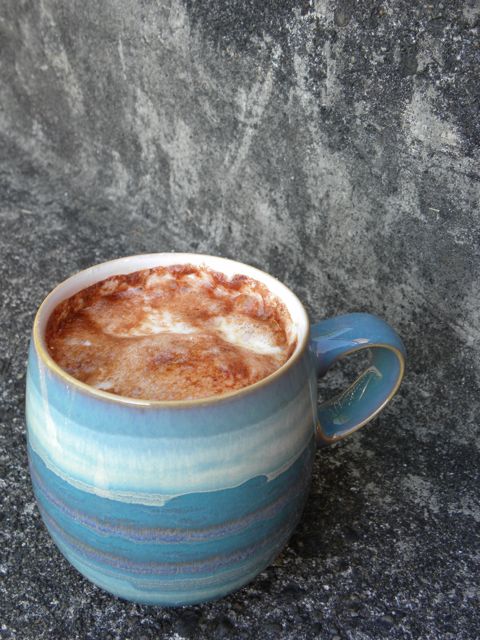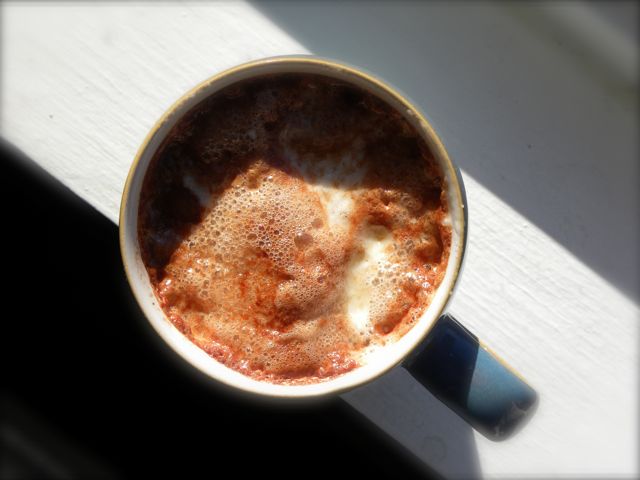I have done some crazy things in my life – jumped off cliffs, resuscitated a fish, eaten expired yogurt, gotten married (crazy, yes, but wonderful). But some of my craziest moments have been in the name of writing. Because when it comes down to it, there are times when all the research in the world can’t hold a candle to actual experience.
To get the most realism out of your work, sometimes you just have to live it out. Some things you can fake, but other things you need to experience in order to write about them properly. My last writing experiment I’m pretty sure landed me the official title of neighborhood crazy lady.
I had no idea how it felt to be kidnapped and locked in the trunk of a car – a critical event in the novel I’m writing.  So what did I do? Well, I couldn’t kidnap myself (so I had to do research for that), but I could lock myself in the trunk of a small car (with help, of course, to make sure I could get out!).
I learned a lot from this experience. I figured out how my character felt when locked in a small space, I heard what she probably heard…the muffled hum of the engine, the warmth that gathers in the floor beneath and the claustrophobic feeling of not being able to straighten out your legs. I pulled my hands behind my back and kept my ankles together to test out the positions she would have been able to lay in. (My husband declined to tie me up for fear of what the neighbors might think. Smart man.)
Most importantly, I discovered the key to my main character’s escape: the glow-in-the-dark handle. How was my character able to open the trunk and signal for rescue? There was a handle on the inside of the trunk for emergency (and boy did she need it!).
Of course, not every story will require such drastic measures. The point is, do your research! If you want your work to carry weight, don’t cut corners. Know the world your characters are living in and don’t always just make assumptions. Another scene I’m writing required extensive tech knowledge which, in all honesty, was way over my head. So I consulted the professionals….ok, they weren’t ‘professionals,’ but they knew a lot more than I did about the subject matter. Doing this research gains credibility in the eyes of your readers in the long run. So don’t short change your work by not knowing exactly what you’re talking about.
Another example is from a fellow writer. She has a scene in her book in which her main character walks into the kitchen of her new home and bounces off a tile in the floor and falls. She knew I used to work in the construction industry and asked me about it. I consulted some flooring colleagues and provided my friend with an alternative: Her character could walk into the kitchen and slip on a squishy floor because the refrigerator had busted a water line, flooding the room. Way more accurate and believable, therefore lending credibility and weight to the story and its teller.
I would like to take this opportunity to encourage you to consider writing about something you don’t know about. Use it as an excuse to try something new. Consider parts of your story that were written strictly from imagination. Could you pursue a course of research on that part? Perhaps you are assuming what the cake in that scene tastes like, even though you’ve never actually tried it. (What a good excuse to eat cake, eh?) Would the screen on a computer go blue in a particular situation? What would a policeman say when he caught your character red-handed? Now, I’m not saying you should go out and commit a crime just to see what would really happen, but I am suggesting that you go through the proper channels to ask about it. There’s never any harm in asking.
Some of the simplest touches can make your work pop. Does your character have a signature habit of peeling oranges in one long strip? How might he do that? Go to the store, pick up a couple oranges and give it a try. Does your protagonist spend a lot of time at the horse tracks? Take a trip with some friends and watch a race. Just use common sense, be safe and have fun. It’s all in the name of accuracy to enhance the weight and accuracy of your writing!
